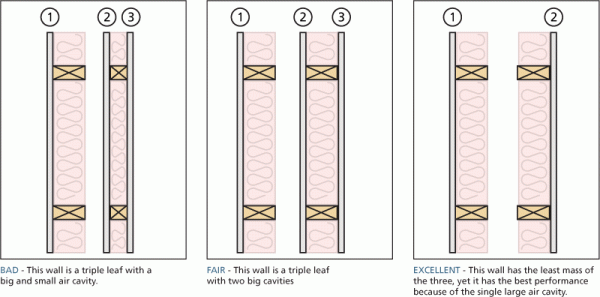InTherapy Studios control room
Posted: Wed Mar 28, 2018 3:50 am
Hi, and thanks for this forum. I have read a lot, and have already adjusted my plans a lot because of it.
So here's the deal: We have a rehearsal room that we are considering dividing to make a good control/mixing room.
The total room is 820cm by 490cm, and ceiling height is 238cm.
We do not need to worry about sound escaping the room, as there are no neighbours to consider, therefore we don't feel we need to change any of the existing walls. The wall separating the rooms will be built as separate walls with an airgap in between, and tho layers of plasterboard on each side.
The new control room will be 300cm wide, 490 long and we are thinking of lowering the ceiling (will get back to that i the questions).
on the middle of each short side of the existing room, there is a massive stud wall to ceiling, and also a beam in the roof (20cm thick and goes down 30cm from the ceiling. Outside it we will also build a new vocal booth as the old one is located where the new room will be.
I'm going to flushmount/soffitmount the speakers (Adam A7X), but have not decided which patent to use just yet. From what i gather, I will have about 60cm of baffle on each side of the monitors.
Now, a couple of questions:
1. When chosing speaker height, should I aim the tweeter at my ear, or the middle between the tweeter and the woofer?
2. My ear height when seated is appr. 110-115cm, this might not be the best height for the monitors considering the ceiling height. (50% area) Should I consider raising them and angeling them down, or will it be alright. Another option would be to lower the ceiling a lot, but I don't think thats the best idea.
3. The front baffle in a soffit installation should be rugged and massive, but is plasterboard (several layers) okay, or is it worth opting for MDF?
4. Is the proposed measurements of the room okay? I can probably squeese in some extra width if I gain a lot from it.
5. I read that some recommend treating the wall in the middle of the two baffles for an even more focused stereo image. What is your recommendation on this?
In the drawing the yellow fields are just some proposed wall treatment (sound panels and basstraps), but that will of course be made after testing the room.
I'm sorry for not providing a complete sketchup, but I have never used Sketchit, and I'm used to drawin on paper
So here's the deal: We have a rehearsal room that we are considering dividing to make a good control/mixing room.
The total room is 820cm by 490cm, and ceiling height is 238cm.
We do not need to worry about sound escaping the room, as there are no neighbours to consider, therefore we don't feel we need to change any of the existing walls. The wall separating the rooms will be built as separate walls with an airgap in between, and tho layers of plasterboard on each side.
The new control room will be 300cm wide, 490 long and we are thinking of lowering the ceiling (will get back to that i the questions).
on the middle of each short side of the existing room, there is a massive stud wall to ceiling, and also a beam in the roof (20cm thick and goes down 30cm from the ceiling. Outside it we will also build a new vocal booth as the old one is located where the new room will be.
I'm going to flushmount/soffitmount the speakers (Adam A7X), but have not decided which patent to use just yet. From what i gather, I will have about 60cm of baffle on each side of the monitors.
Now, a couple of questions:
1. When chosing speaker height, should I aim the tweeter at my ear, or the middle between the tweeter and the woofer?
2. My ear height when seated is appr. 110-115cm, this might not be the best height for the monitors considering the ceiling height. (50% area) Should I consider raising them and angeling them down, or will it be alright. Another option would be to lower the ceiling a lot, but I don't think thats the best idea.
3. The front baffle in a soffit installation should be rugged and massive, but is plasterboard (several layers) okay, or is it worth opting for MDF?
4. Is the proposed measurements of the room okay? I can probably squeese in some extra width if I gain a lot from it.
5. I read that some recommend treating the wall in the middle of the two baffles for an even more focused stereo image. What is your recommendation on this?
In the drawing the yellow fields are just some proposed wall treatment (sound panels and basstraps), but that will of course be made after testing the room.
I'm sorry for not providing a complete sketchup, but I have never used Sketchit, and I'm used to drawin on paper
